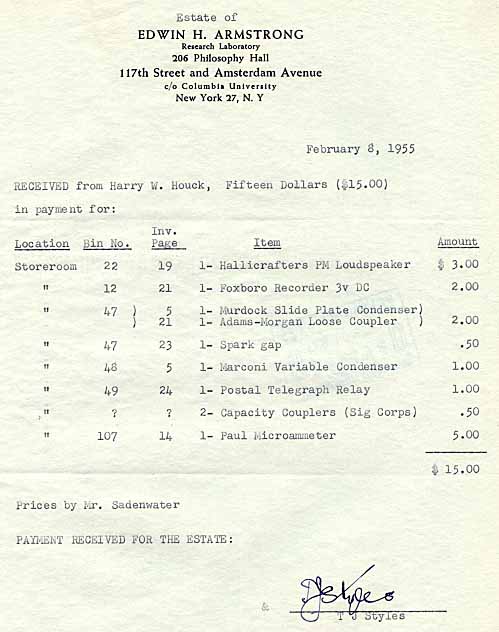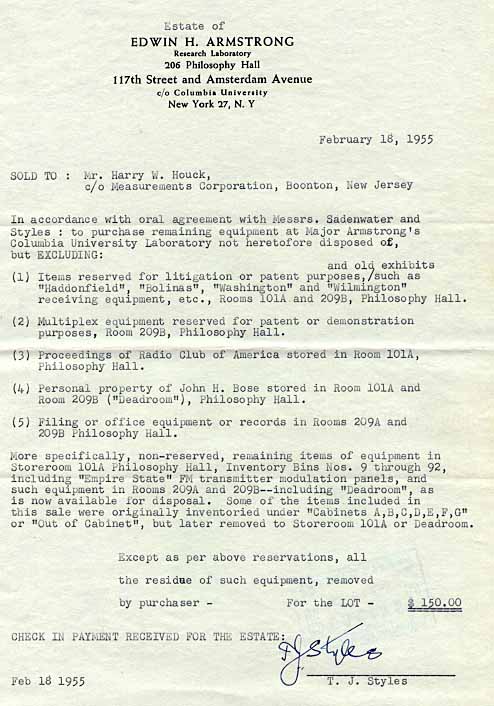
Armstrong's laboratories at Philosophy Hall, Columbia University, were overflowing with documents and artifacts of a long career. Unlike Sarnoff, Ford or Edison, for example, who's corporations had libraries established long before they passed away, Armstrong was a lone player. Without the corporate structure or necessary financial support there would be no dedicated depository for his legacy.
After his death, artifacts with the greatest historical significance went to various museums. The original regenerative set and the first superhet from his Signal Corps work in France went to the Smithsonian, the second model superhet from France went to the Signal Corps Museum at Fort Monmouth, the "honeymoon" suitcase portable second harmonic superhet went to the Ford Museum, the patent litigation model of his first regenerative set went to the AWA Museum and prototypes of the RCA six tube second harmonic superhet went to the Smithsonian and AWA. Many artifacts of lesser importance went to those and other museums as well. The Armstrong Memorial Research Foundation, based at Columbia and organized shortly after his death by his closest friends and associates, took a large number of documents for preservation.
Be that as it may, the amount of important historical material remaining was still staggering. Harry Houck was determined that this material would not be lost and was determined to collect and display it in his own museum. The material was moved to two storage locations to be gone through later and prepared for display. Unfortunately, with mounting responsibilities at Measurements Corporation, and priorities being what they are, it never happened. Retirement, moving to Florida, the death of his wife, failing health, the serious fire at his future museum--such are the things that change a man's plans.
It was then that a fortunate turn of events occurred -- Harry's nephew, Gilbert Houck, upon being made aware of the potential loss of the remaining artifacts and documents, began working with Harry to insure their survival. He acted quickly to remove the material from the unprotected barn, to retrieve what was left from the fire and, following Harry's death, to make sure important material from Florida was retrieved. Today, once again, the material remains as a collection.
The following documents and photos show the disposition of the material after Armstrong's death:
From Armstrong's wife - 1954



